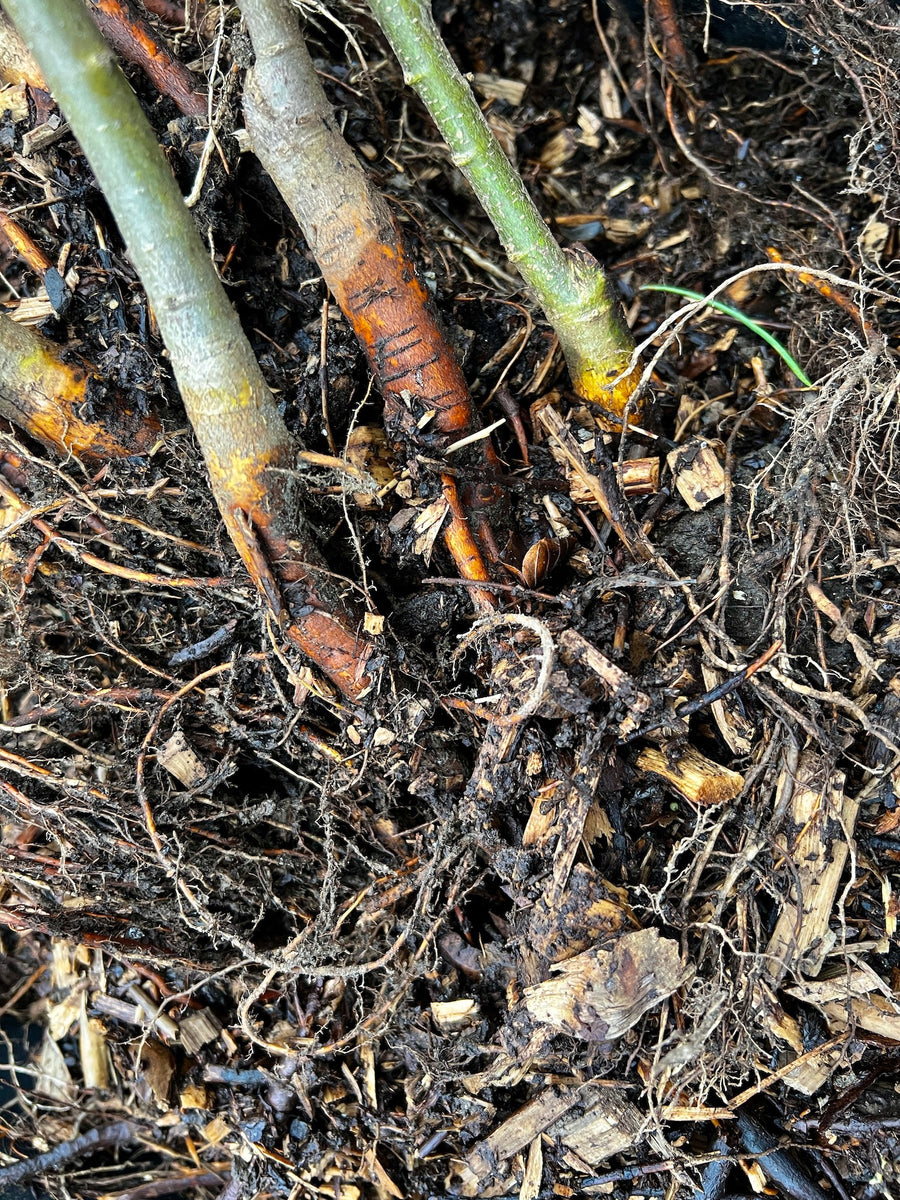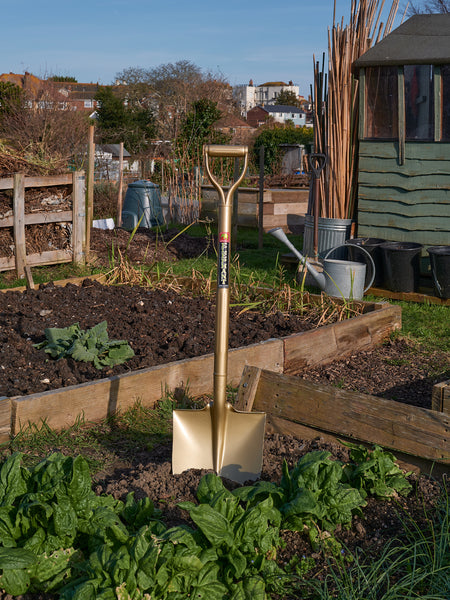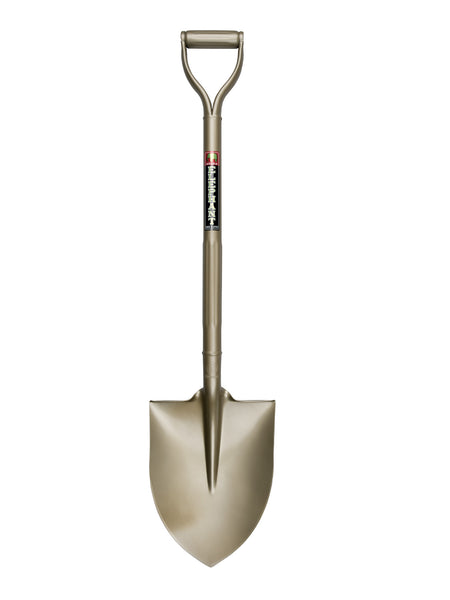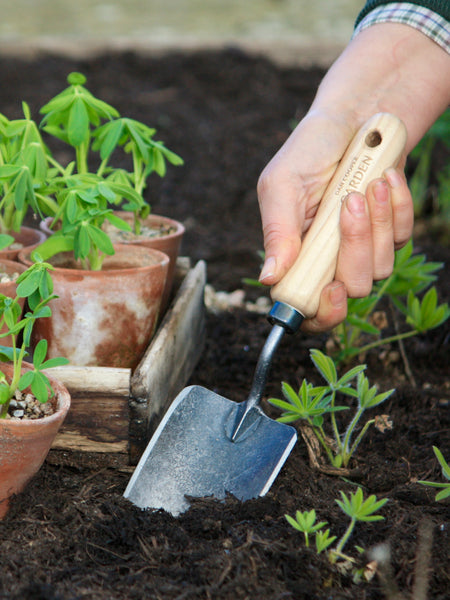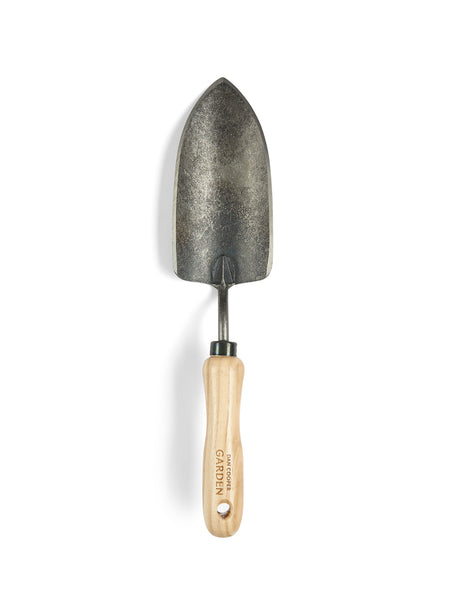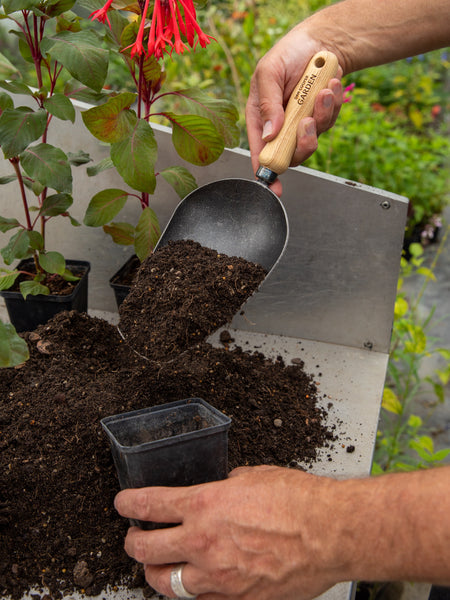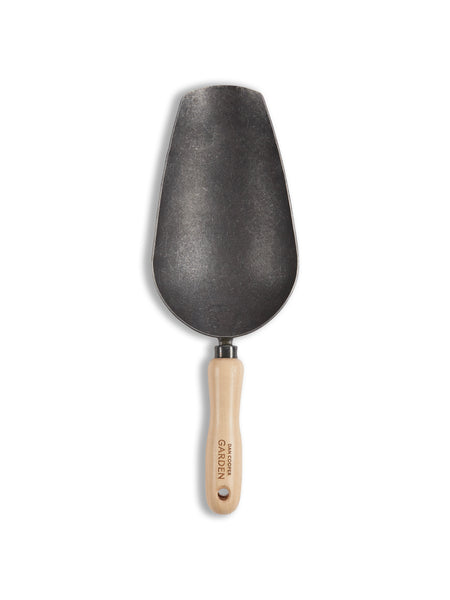Grown in the field and lifted for sale whilst they are dormant, bare-rooted plants are supplied without soil or compost surrounding their lower quarters. To the uninitiated, bare-rooted plants can seem like a dubious prospect - naked, gaunt and lifeless. But in reality, they're no different to a bulb or seed. Hidden inside each leafless twig or bundle of roots and shoots is a living organism raring to grow. In this post, I explain why bare-rooted plants are good for your garden, your purse and the environment.
In a world where selling plants potted in compost is the norm, bare-rooted plants have long been overlooked by mainstream retailers and forgotten by many gardeners. I put this down to our thirst for ‘instant’ results and our bias towards gardening when the weather is pleasant in spring and summer.

A clutch of bare-rooted roses 'heeled in' until the gardener has space or time to plant them. They'll be fine like this for a few weeks or until the weather starts to warm up.
The issue is that most bare-rooted plants are only available for purchase and planting between late autumn and early spring (November to March in the U.K.), when they are not actively growing. They are dug from the growers’ fields, often to order, and distributed by post to gardeners in the know. Not all plants can be grown and sold this way, but a surprising number can, including deciduous trees, shrubs, hedging plants, roses, perennials and fruit bushes. Although they lack the glamour and excitement of a potted plant in full growth, they are more economical, sustainable and just as rewarding in the long term.
Here are the advantages of choosing bare-rooted plants:
- Establishment - once planted, dormant plants begin to develop new roots before leaves and flowers emerge in spring, ensuring they get off to a strong start. The top and bottom of the plant then develop perfectly in tandem rather than one part placing unreasonable demands on the other. The result is often a healthier specimen.
- Cost - bare-rooted plants are 30-50% cheaper than potted plants because there’s no pot, compost, or fancy labelling to be paid for. They also cost significantly less to transport because their weight and volume are much lower than potted plants. If you are planting a hedge, an orchard, or any large area of trees, shrubs or perennials, choosing bare-rooted plants could save you a small fortune.
- Sustainability - no pot means no plastic and no peat. If a bare-rooted plant is labelled at all, it will be with a simple tag rather than a giant plastic tombstone. Moreover, growing plants in an open field is infinitely less labour-intensive and water hungry than growing them in a succession of pots until they are large enough to be sold.
- Health - since many pests and diseases are soil-bourne, removing soil before transportation reduces their risk of spreading.
- Range - in plants where bare-rooted remains the most popular form of sale, for example, roses, fruit trees and fruit bushes, a more comprehensive range of varieties is available bare-rooted versus containerised.

Offering a compromise for anyone who is not ready to plant straight away, these bare-rooted saplings have been potted for sale in clumps of ten. They could be planted out any time between November and March.
Naturally, there are also some drawbacks worth highlighting:
- Timing - most bare-rooted plants are available only in winter when they’re dormant*. If you’re planting at any other time, they might not be suitable. One way around this is to buy bare-rooted plants and then either pot them up at home or plant them in a holding area until you are ready to put them in their permanent positions later in the season. In doing so, you’ll save money and reduce the amount of plastic that goes to landfill.
- Urgency - bare-rooted plants need attending to immediately after they’re delivered. For those of us with busy lives, this is rarely convenient. The reason they can’t wait is that they mustn’t dehydrate. With no soil to keep the roots moist, they need soaking in a bucket of water, temporarily ‘heeling in’ or tucking up in damp compost until they can be dealt with. Don’t leave bare-rooted plants lying around outside, exposed to cold winds. They are naked, after all!
- Trust - we’ve all sown seeds or planted bulbs that have turned out to be entirely different from what we ordered. That can also happen with bare-rooted plants because it’s more challenging to identify a plant without defining features like leaves and flowers. Mix-ups do occur, but most suppliers of bare-rooted plants are reputable and will rectify mistakes. There’s also a chance that a bare-rooted plant might be dead on arrival or fail to grow. Again, outward appearances make it very hard to tell, but by using your thumbnail to scratch away a tiny patch of bark, you can generally confirm if a plant is healthy. If the tissue beneath is green, yellowish or white, chances are it’s alive and kicking. If it’s brown, that could signify death or disease. Discuss any doubts immediately with the supplier.

These substantial sea buckthorn saplings would make a brilliant hedge in a coastal garden.
When and how to plant a bare-rooted plant
Provided the ground is neither frozen nor waterlogged, the best time to plant bare-rooted plants is on arrival. If ground conditions are not on your side, store them in a bucket of moist compost in a frost-free shed or garage until the situation improves.
- Using a spade, dig a square hole that’s large enough to accommodate all the roots. Some bare-rooted plants will be supplied with substantial, protruding roots, and you should avoid the temptation to prune or squeeze them into a tight spot.
- A sprinkling of mycorrhizal fungi around the roots will increase nutrient and water uptake, helping the plant establish itself quickly. Likewise, a handful of granular feed or pelleted chicken manure won’t go unrewarded.
- The critical thing is to plant at the same level as the plant was initially growing in the field. This is important since planting too deep can impede a plant’s growth or even kill it. Fortunately, there’s usually a tell-tale change of colouring on the plant’s stem where it transitions from above to below ground. In the image below, this is where the stem turns from green to yellow - indicated by a blue line - but it can vary depending on the plant. Allow for the soil around the plant to settle slightly, which practically means planting a tiny bit deeper than the junction, called the ‘nursery line’ or ‘collar’.
- Before backfilling with soil, insert any supports the plant might need in future, so they’re not accidentally driven through the roots later. Given the time of year, trees and large shrubs will benefit from staking so that the wind does not rock them about while they attempt to establish new roots.
- Firm the plant gently with the heel of your boots, ensuring the plant is upright and well anchored. Water thoroughly to settle the soil around the roots and mulch generously with compost as a final gift to your new acquisition.

If you’re planting a hedge or a row of raspberry canes, it can be much quicker and easier to dig a shallow trench or use the spade method of planting: insert your spade to its full depth and push the handle forward to make a slot in the soil behind it. Find the ‘nursery line’ and put the plant's roots into the slot behind the spade, checking it’s not sitting too deep. Then, holding the plant in place, remove the spade and repeat the process with the second plant, thereby firming the first one into place. It’s straightforward when you get the hang of it!
Where to buy bare-rooted plants
Always check your local nursery or garden centre first. If their range is too limited, here are some good options:
- Roses - David Austin Roses
- Native hedging - Hopes Grove Nurseries
- Ornamental and fruit trees - Frank P Matthews
- Fruit trees & bushes - RV Roger Nurseries
- Bearded iris - Iris Cayeux (France)
- Peonies - Claire Austin
*one exception is bearded irises, where divisions are supplied in summer after flowering.
